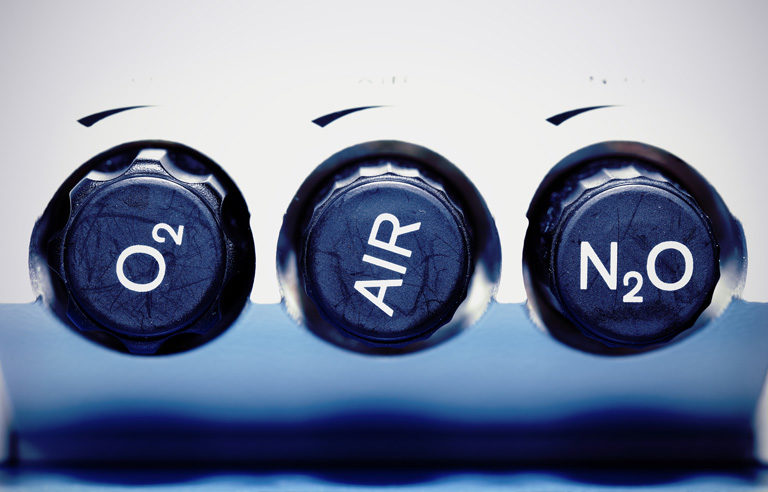Dental workers not taking all steps to control exposure to nitrous oxide: study

Photo: sudok1/iStockphoto
Washington – Although most dental professionals use a scavenging system to prevent nitrous oxide gas from escaping during dental procedures, adherence to other recommended practices – such as checking equipment for leaks – is lacking, according to a new study from NIOSH.
The agency surveyed 284 dentists, dental hygienists and dental assistants in private practice who had used nitrous oxide in the previous week. More than 93 percent of respondents said they had employed a nasal scavenging mask or local exhaust ventilation around a patient’s mouth when using nitrous oxide.
However, a little more than half (51 percent) reported that they did not check for leaks when using the gas on adult patients and 47 percent did not check before using it on pediatric patients.
Other findings:
- 13 percent of dental practices do not have standardized procedures for minimizing nitrous oxide exposure.
- 3 percent do not have proper training on safe handling and administration procedures.
- The flow of nitrous oxide started before the mask was applied to 16 percent of adult patients and 14 percent of pediatric ones.
- The flow of nitrous oxide was not halted before turning off the oxygen flow to 10 percent of adult patients and 8 percent of pediatric ones.
“Successful management of nitrous oxide should include nasal scavenging masks, supplementary LEV if needed, adequate general ventilation, regular inspection of nitrous oxide delivery and scavenging equipment for leaks, availability of standard procedures to minimize exposure, periodic training and medical surveillance,” NIOSH states.
The study was published in the June edition of the Journal of Occupational and Environmental Hygiene.
Post a comment to this article
Safety+Health welcomes comments that promote respectful dialogue. Please stay on topic. Comments that contain personal attacks, profanity or abusive language – or those aggressively promoting products or services – will be removed. We reserve the right to determine which comments violate our comment policy. (Anonymous comments are welcome; merely skip the “name” field in the comment box. An email address is required but will not be included with your comment.)

